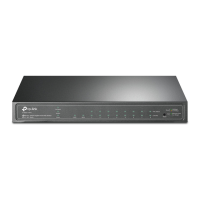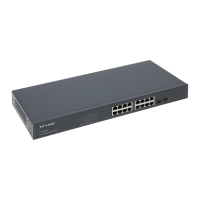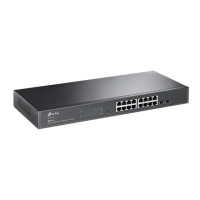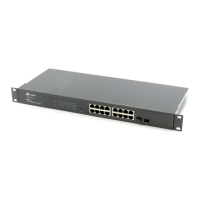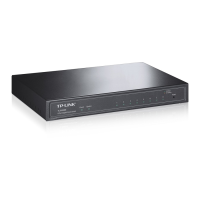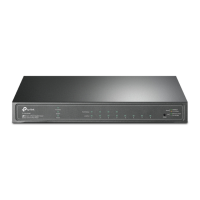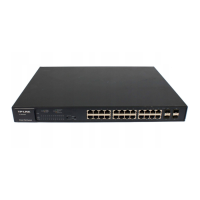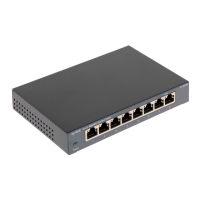Do you have a question about the TP-Link TL-SG2210MP and is the answer not in the manual?
Essential safety guidelines to prevent device damage and personal injury during installation.
Step-by-step instructions for installing the switch on a desktop or in a rack.
How to configure and manage a single switch using its web GUI or CLI.
Centralized management of multiple devices using Omada controllers.
Steps to reset the switch to factory defaults if login credentials are lost.
Essential safety guidelines to prevent device damage and personal injury during installation.
Step-by-step instructions for installing the switch on a desktop or in a rack.
How to configure and manage a single switch using its web GUI or CLI.
Centralized management of multiple devices using Omada controllers.
Steps to reset the switch to factory defaults if login credentials are lost.
| 10G support | No |
|---|---|
| Rate limiting | Yes |
| Number of VLANs | 4000 |
| Networking standards | IEEE 802.1D, IEEE 802.1Q, IEEE 802.1p, IEEE 802.1s, IEEE 802.1w, IEEE 802.1x, IEEE 802.3ab, IEEE 802.3ad, IEEE 802.3af, IEEE 802.3at, IEEE 802.3az, IEEE 802.3i, IEEE 802.3u, IEEE 802.3x, IEEE 802.3z |
| Virtual LAN features | MAC address-based VLAN, Multicast VLAN, Protocol-based VLAN, Tagged VLAN, Voice VLAN |
| Copper ethernet cabling technology | 10BASE-T, 100BASE-TX, 1000BASE-T |
| SFP module slots quantity | 2 |
| Installed SFP modules quantity | 0 |
| Basic switching RJ-45 Ethernet ports type | Gigabit Ethernet (10/100/1000) |
| Basic switching RJ-45 Ethernet ports quantity | 8 |
| Stackable | - |
| Form factor | 1U |
| Certification | CE, FCC, RoHS |
| Product color | Black |
| Number of fans | 1 fan(s) |
| Fiber ethernet cabling technology | 100BASE-FX, 1000BASE-X |
| Total Power over Ethernet (PoE) budget | 150 W |
| Jumbo frames | 9000 |
| Forwarding rate | 14.9 Mpps |
| MAC address table | 8000 entries |
| Packet buffer memory | 4.1 MB |
| DHCP features | DHCP client, DHCP relay, DHCP server, DHCP snooping, DHCPv6 client, DHCPv6 snooping |
| Security algorithms | EAP-LEAP, EAP-MD5, EAP-TLS, EAP-TTLS, HTTPS, SNMP, SNMPv2, SNMPv3, SSH, SSH-2, SSL/TLS |
| Queue scheduling algorithms | SP, Weighted Round Robin (WRR) |
| Switch type | Managed |
| Switch layer | L2/L2+ |
| Power source | AC |
| AC input voltage | 100 - 240 V |
| AC input frequency | 50/60 Hz |
| Power consumption (max) | 173.9 W |
| Heat dissipation | 594.46 BTU/h |
| Storage temperature (T-T) | -40 - 70 °C |
| Operating temperature (T-T) | 0 - 50 °C |
| Storage relative humidity (H-H) | 5 - 90 % |
| Operating relative humidity (H-H) | 10 - 90 % |
| Harmonized System (HS) code | 85176990 |
| Package depth | 400 mm |
| Package width | 250 mm |
| Package height | 80 mm |
| Package weight | 2120 g |
| Depth | 180 mm |
|---|---|
| Width | 294 mm |
| Height | 44 mm |
